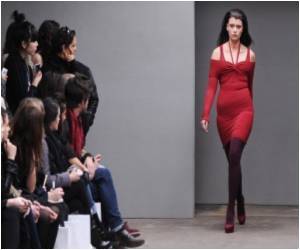A new study uncovers the decisions that happen behind the scenes of the glossy photos and slick commercials in the modelling industry.

While their work is motivated by the aesthetic, their decisions are based on more than just a pretty face.
Their documentary style produces bodily knowledge about models that is both diagnostic and predictive, which they use to assess models' suitability for other photographic contexts. Reading these images, however, ultimately requires their expertise and is based on their first-hand interactions with models, which most frequently occur through casting encounters," she said.
Sadre-Orafai said the agents took Polaroid photos and a series of digital images of four standard casting poses: the headshot, profile, torso and full-body.
"Rather than a binding representation of a model, the casting images were starting points or tools agents used in conjunction with stories to try to re-create the multi-sensory dimensions of a casting interaction, with the ultimate goal of arranging a face-to-face meeting or call-back between the model and the client," she explained.
One of the surprising findings from the research was that many agents were critical of the fashion industry - as agents tried to not only balance fantasy and authenticity but also other fashion producers' ideas about race, as part of their work.
Advertisement
"As such, these casting images are never meant to replace in-person assessments. Instead, agents use layouts with their stark documentary aesthetic as tools to present clients with a greater range and number of models than they can see directly. Casting agents also emphasize the need for discursive framing of these images."
Advertisement
Source-ANI









